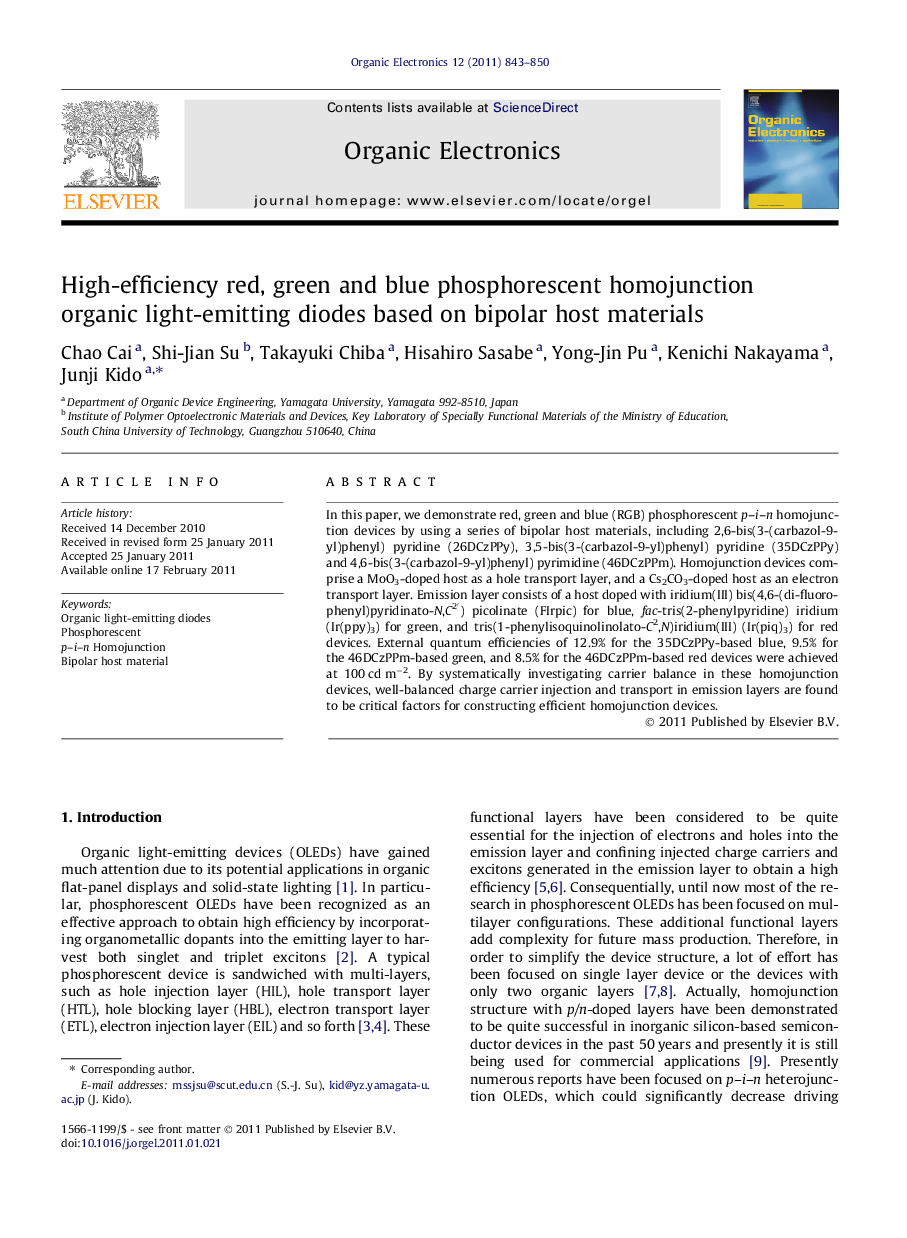| Article ID | Journal | Published Year | Pages | File Type |
|---|---|---|---|---|
| 1265362 | Organic Electronics | 2011 | 8 Pages |
In this paper, we demonstrate red, green and blue (RGB) phosphorescent p–i–n homojunction devices by using a series of bipolar host materials, including 2,6-bis(3-(carbazol-9-yl)phenyl) pyridine (26DCzPPy), 3,5-bis(3-(carbazol-9-yl)phenyl) pyridine (35DCzPPy) and 4,6-bis(3-(carbazol-9-yl)phenyl) pyrimidine (46DCzPPm). Homojunction devices comprise a MoO3-doped host as a hole transport layer, and a Cs2CO3-doped host as an electron transport layer. Emission layer consists of a host doped with iridium(III) bis(4,6-(di-fluorophenyl)pyridinato-N,C2′) picolinate (FIrpic) for blue, fac-tris(2-phenylpyridine) iridium (Ir(ppy)3) for green, and tris(1-phenylisoquinolinolato-C2,N)iridium(III) (Ir(piq)3) for red devices. External quantum efficiencies of 12.9% for the 35DCzPPy-based blue, 9.5% for the 46DCzPPm-based green, and 8.5% for the 46DCzPPm-based red devices were achieved at 100 cd m−2. By systematically investigating carrier balance in these homojunction devices, well-balanced charge carrier injection and transport in emission layers are found to be critical factors for constructing efficient homojunction devices.
Graphical abstractFigure optionsDownload full-size imageDownload as PowerPoint slideResearch highlights► Red, green and blue (RGB) phosphorescent p-i-n homojunction devices were demonstrated by using only one organic matrix. ► External quantum efficiencies of 12.9% for blue, 9.5% for green, and 8.5% for red devices were achieved at the brightness of 100 cd m−2. ► Well-balanced charge injection, transport and charge trapping are found to be critical factors for constructing efficient homojunction devices.
